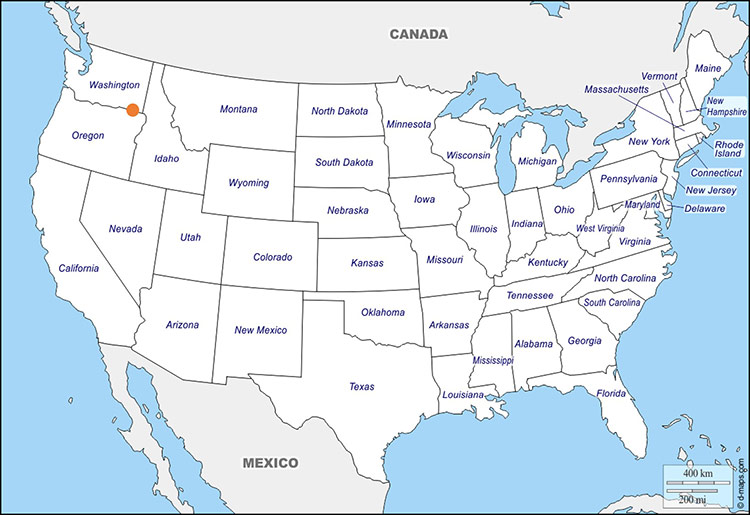Phylloxera has been found in multiple vineyards for the first time in the Walla Walla Valley in the US, as reported in Wine-Searcher on 4 September. This area is in the south-eastern corner of Washington state (Figure 1), stretching across the border into Oregon.

Shiraz and Cabernet Sauvignon are the dominant varieties of the region which is known for its premium wine production. This area has a high proportion of vines planted on own roots, which is unusual in the US.
Phylloxera is considered to have been in Washington state since 1910 but detected only in Concord (Vitis labrusca) vineyards in the past. The article suggests no active surveillance for phylloxera has been undertaken in the Walla Walla Valley to date and that no quarantine restrictions for movement of phylloxera risk vectors have been in place to minimise spread.
Importantly, this outbreak has been touted as a reflection of climate change. “This valley has historically been subjected to hard freezes in winter, which serve to slow down phylloxera reproduction, resulting in one or two generations per year compared to four to six in California,” the article said.
Andrew Walker, professor of viticulture at UC Davis suggested the valley had probably had phylloxera for at least a decade and that the lack of hard freezes for a while has likely increased the reproductive rate of the phylloxera present and therefore rate of damage in the vineyards, leading to detection.
In addition, the speed of destruction from the phylloxera feeding is expected to be exacerbated by the dry, sandy soils as the vines struggle considerably more to access soil moisture for survival, the article said.
Focus for vineyard owners is now on best practice farm-gate hygiene to keep phylloxera out and to limit its spread.